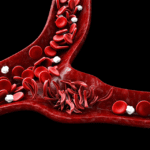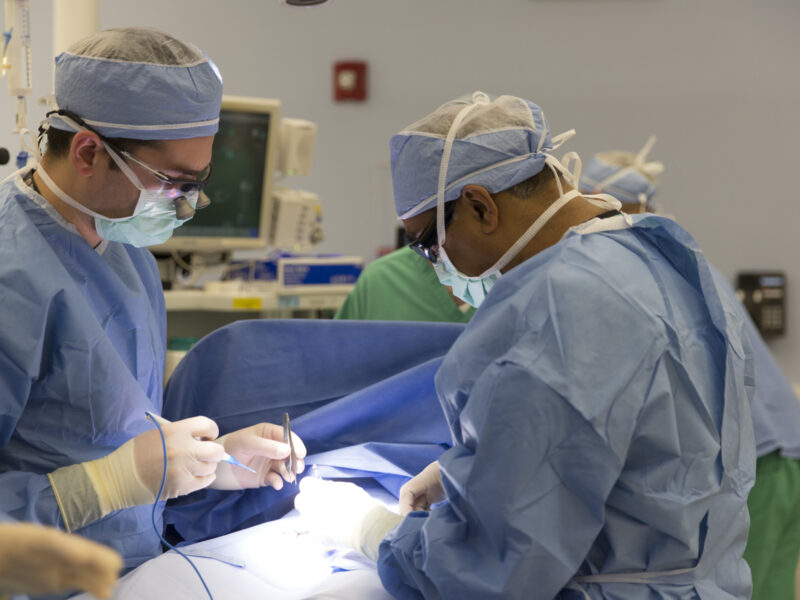Creatine Supplements and the Youth Athlete
Creatine Supplements and the Youth Athlete https://pediatricsnationwide.org/wp-content/uploads/2023/06/142286531.png 945 825 Natalie Wilson Natalie Wilson https://pediatricsnationwide.org/wp-content/uploads/2021/06/Natalieheadshot3-2.png- May 31, 2023
- Natalie Wilson

Researchers at Nationwide Children’s Hospital found there is insufficient evidence that creatine supplementation is effective for consistently improving athletic performance in adolescents. They also identified a gap in knowledge of the long-term effects of creatine supplementation in this population.
Creatine is naturally found in skeletal muscle and acts as an energy source during muscle activation. While most individuals can obtain sufficient levels of creatine through diet, athletes in training may require more of the nutrient per day. This drives some to become interested in supplementation.
Creatine supplements have been available in various forms and widely sold and used for decades. However, in 2022, the Monitoring the Future Survey, a National Institutes of Health (NIH)-funded survey of adolescent students across the United States on substance use and related attitudes, revealed a recent increase in creatine use among this population. Nearly 12% of high school seniors reported they had used creatine without a doctor’s supervision in the past year, and in all grades, the increase in reported creatine use from 2021 to 2022 was the largest on record for this outcome.
This uptick in use raises questions about whether creatine supplementation by this population is useful or even safe. To find out, a research team led by Kevin Klingele, MD, chief of the Department of Orthopedic Surgery and surgical director of Sports Medicine at Nationwide Children’s Hospital, examined existing research on creatine supplementation in healthy children and adolescents. After filtering through thousands of results from PubMed and EMBASE databases, only 13 publications met the team’s inclusion criteria: a focus on patients under 18, a hypothesis that included creatine supplementation and at least one of outcome measure associated with creatine supplementation.
Among 268 subjects across all studies, with mean age ranging from 12 to 18 years, 85% were either soccer players or swimmers. No studies were designed to address the topic of safety or explore adverse effects of creatine supplementation in adolescents.
The identified studies suggest that short-term creatine supplementation may be potentially beneficial for adolescent athletes, and concerns regarding the risk of acute, adverse effects in a healthy population have largely been eliminated. However, because these studies included small sample sizes and lacked diversity among their participants, their findings are not generalizable.
Additionally, in contrast to healthy adults, who do not experience significant changes in skeletal muscle mass, healthy adolescents experience rapid growth in lean muscle around the time of puberty. During this critical period of development, the effects of increased muscle volume that could be induced by creatine supplementation are not well understood.
“The potential risks associated with changes in body composition warrant further investigation,” says Dr. Dr. Klingele.
Even for adults, studies on the effects of creatine supplementation on performance have produced mixed results. While short-term supplementation may offer benefits for quick, explosive movements, its impact on long-term strength gains or endurance sports is inconclusive.
“Growing children and adolescents are at higher risk of sports-related injuries than adults. Given the increasing trend of year-round, sport-specific training among young athletes and increases in reported usage of creatine supplementation in adolescent populations, additional research is needed to explore the long-term risks and benefits, particularly across diverse pediatric and adolescent populations,” says Dr. Klingele. “In the meantime, providers should inform their pediatric and adolescent patients and their families about the current limitations in assessing the true risks and benefits of creatine supplementation.”
Reference:
Metzger GA, Minneci PM, Gehred A, Day A, Klingele KE. Creatine supplementation in the pediatric and adolescent athlete– A literature review. J Orthop. 2023;38:73-78. Published 2023 Mar 25.
Image credit: Adobe Stock
About the author
Natalie is a passionate and enthusiastic writer working to highlight the groundbreaking research of the incredible faculty and staff across Nationwide Children's Hospital and the Abigail Wexner Research Institute. Her work at Nationwide Children's marries her past interests and experiences with her passion for helping children thrive and a long-held scientific curiosity that dates back to competing in the Jefferson Lab Science Bowl in middle school. Natalie holds a bachelor’s degree in sociology from Wake Forest University, as well as minors in women's, gender & sexuality studies and interdisciplinary writing. As an undergraduate student, Natalie studied writing and journalism, engaged with anthropological and sociological research with a focus on race and ethnic relations, served as executive editor for the student newspaper, the Old Gold & Black, and gained marketing experience as an intern for a nonprofit entrepreneurial incubator, Winston Starts, as well as by working for Wake Forest University School of Law Office of Communication and Public Relations and its Innocence and Justice Clinic.
-
Natalie Wilsonhttps://pediatricsnationwide.org/author/natalie-wilson/
-
Natalie Wilsonhttps://pediatricsnationwide.org/author/natalie-wilson/
-
Natalie Wilsonhttps://pediatricsnationwide.org/author/natalie-wilson/
-
Natalie Wilsonhttps://pediatricsnationwide.org/author/natalie-wilson/
- Post Tags:
- Sports Medicine
- Surgery
- Posted In:
- Clinical Updates
- In Brief
- Research










